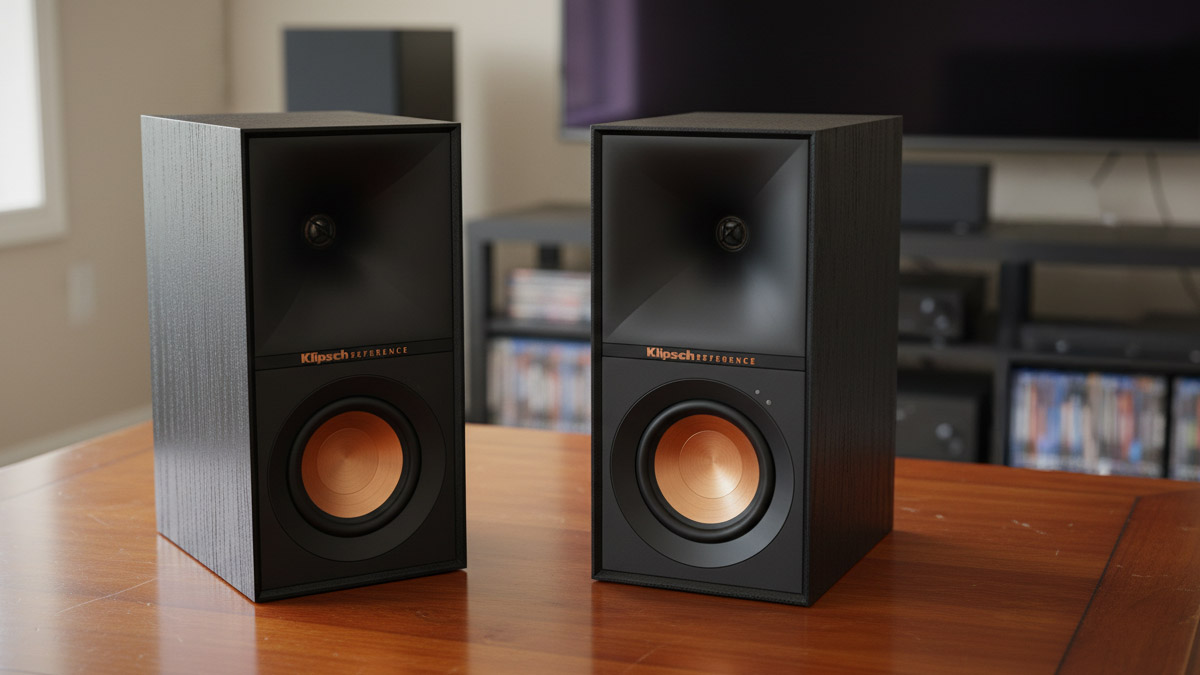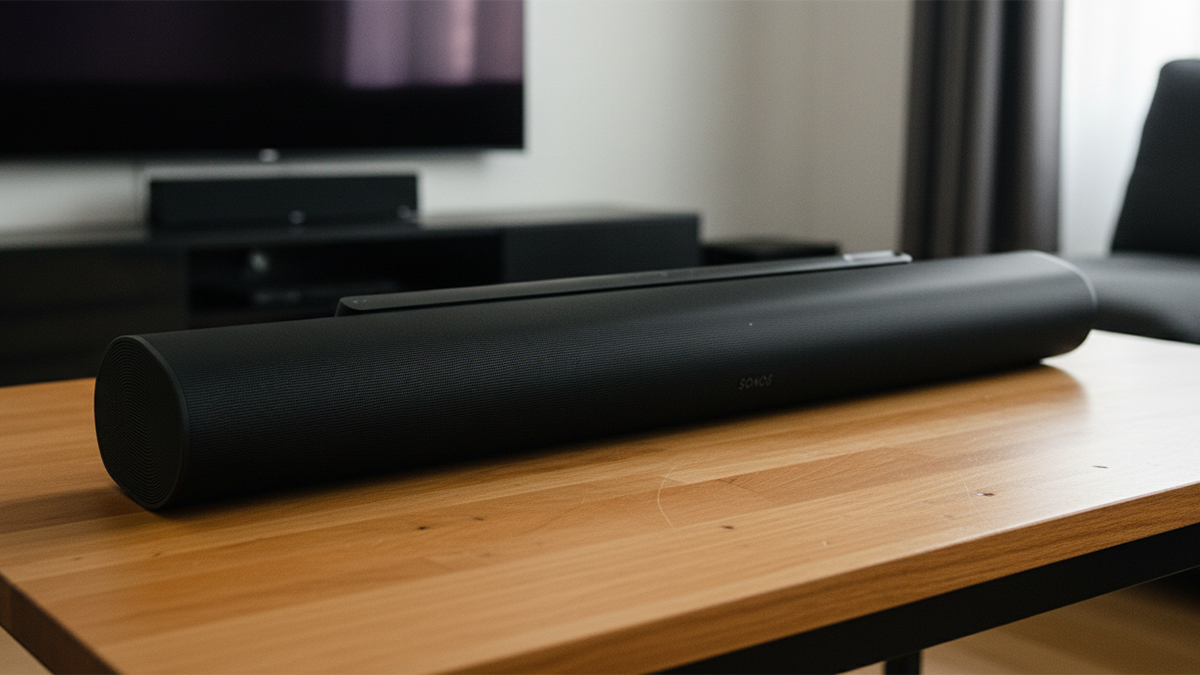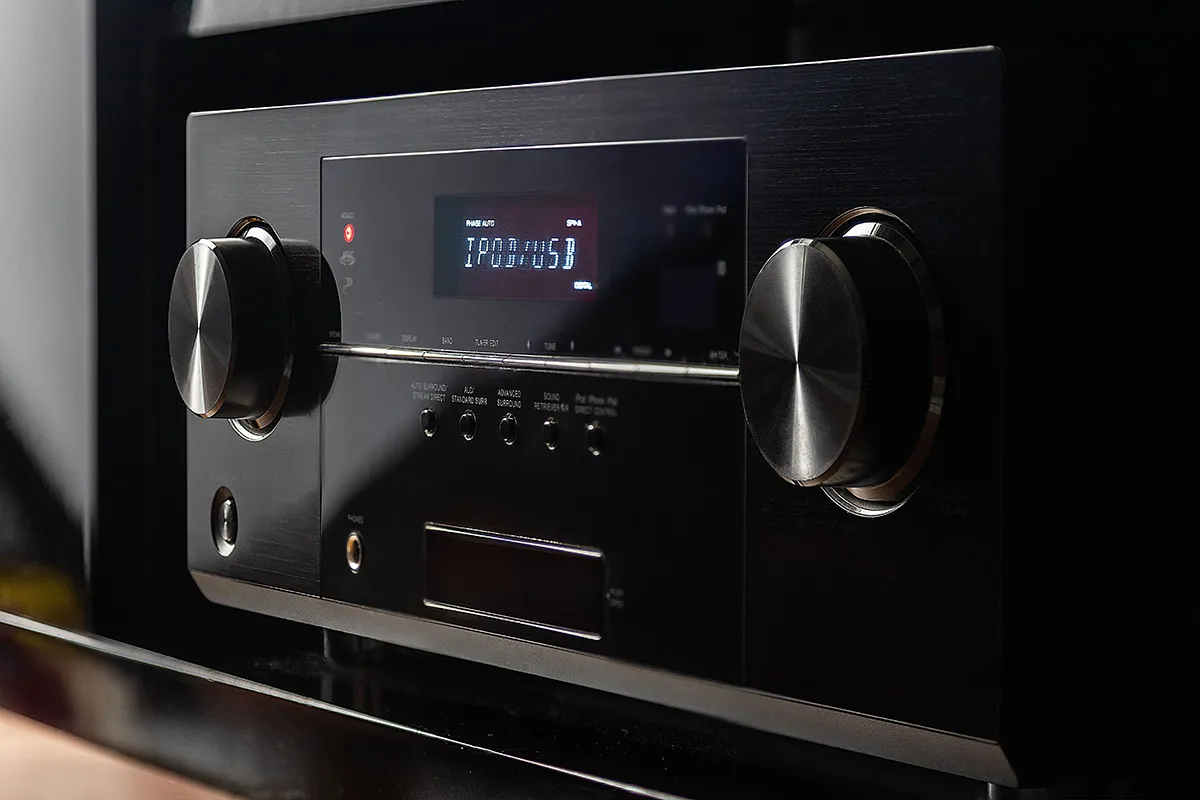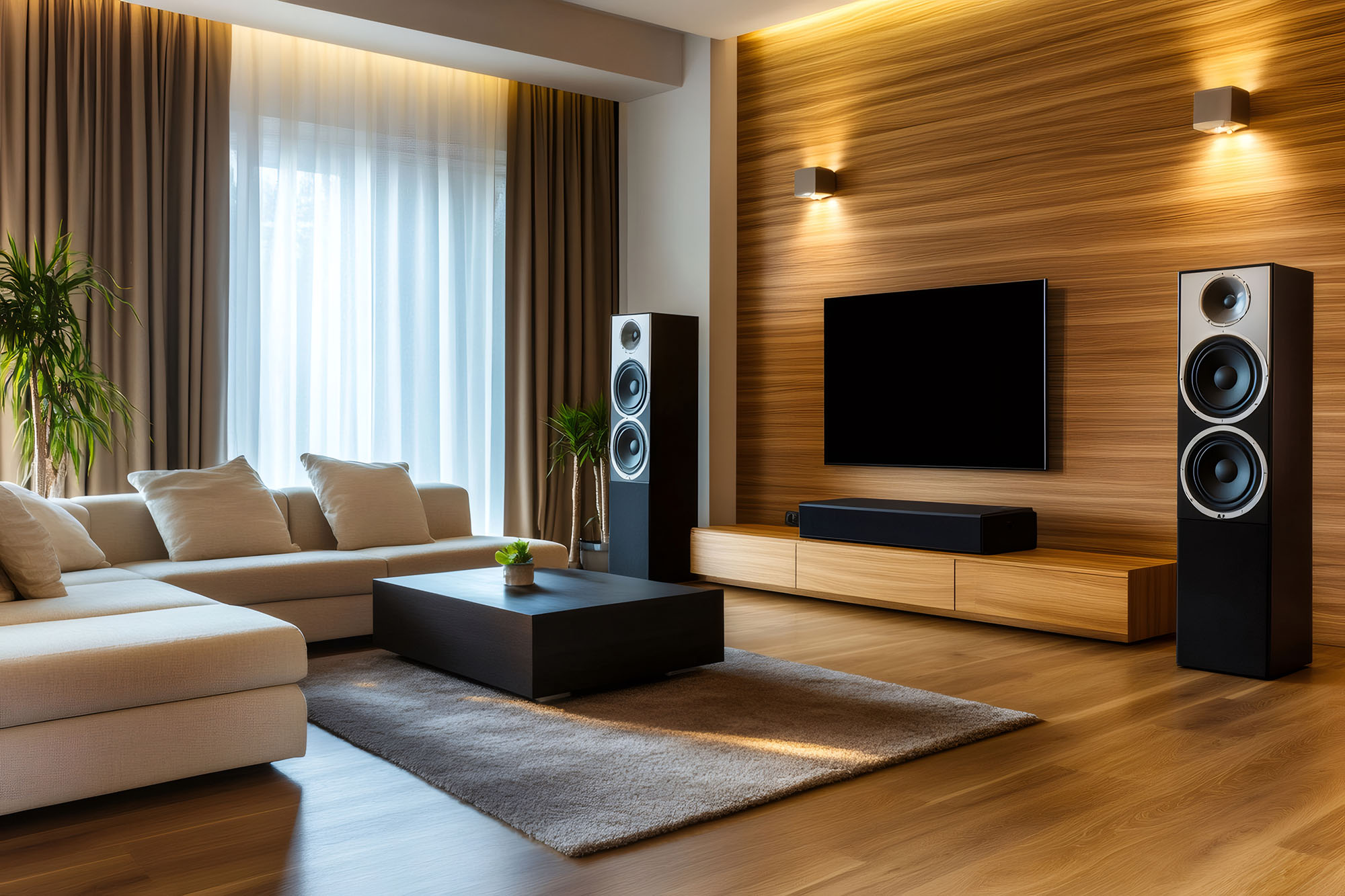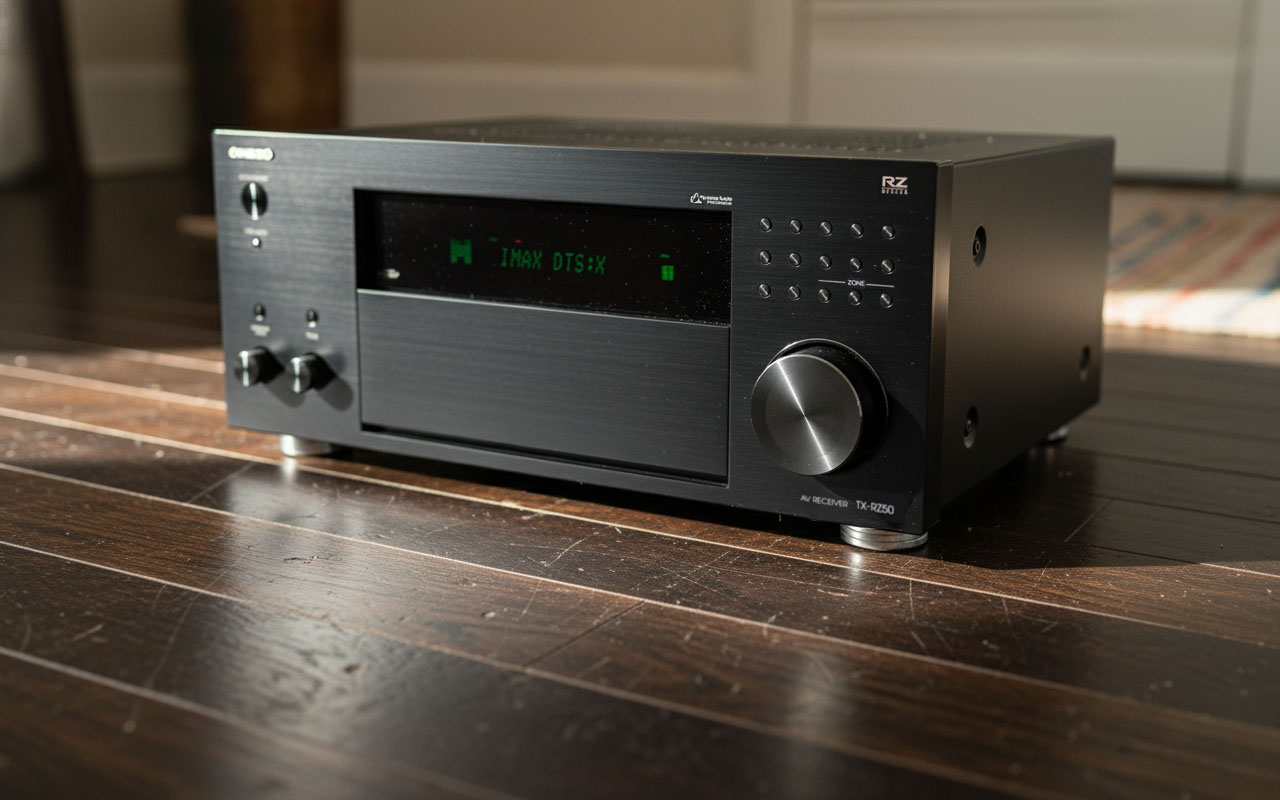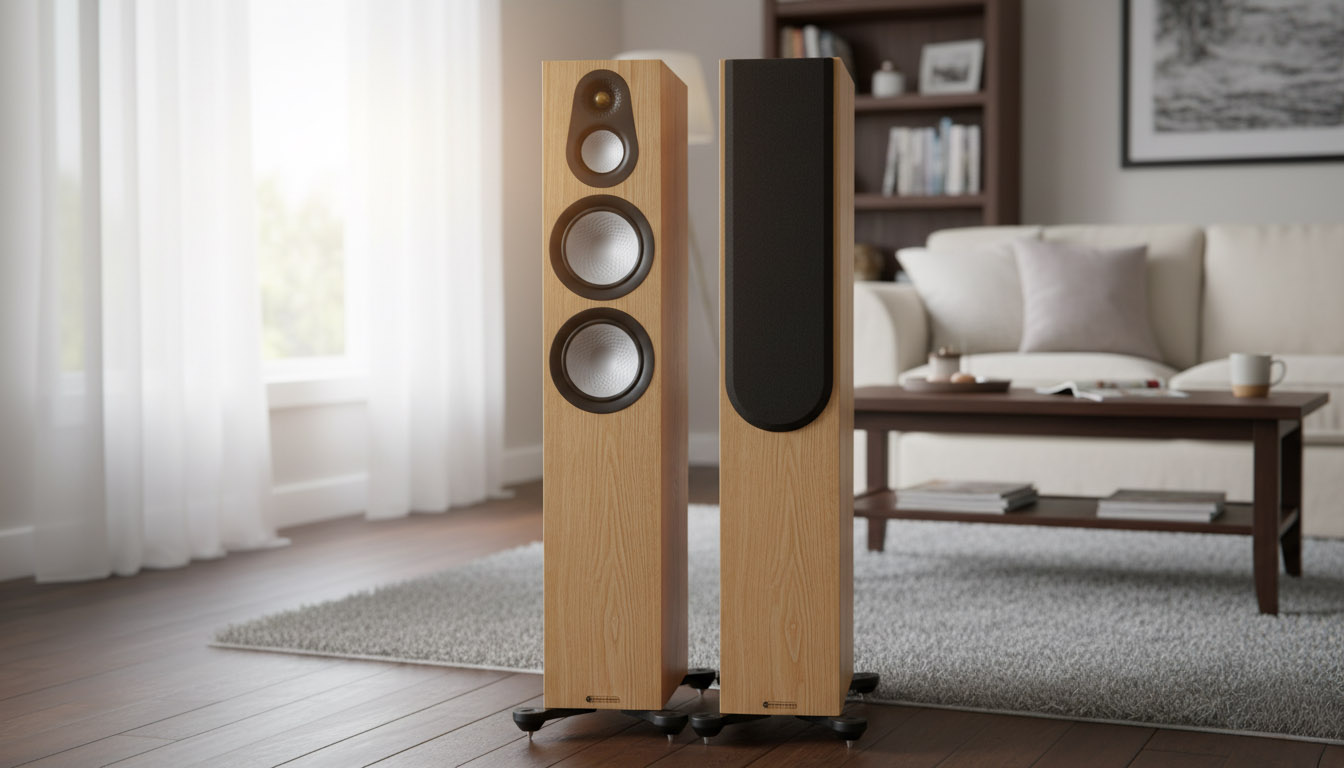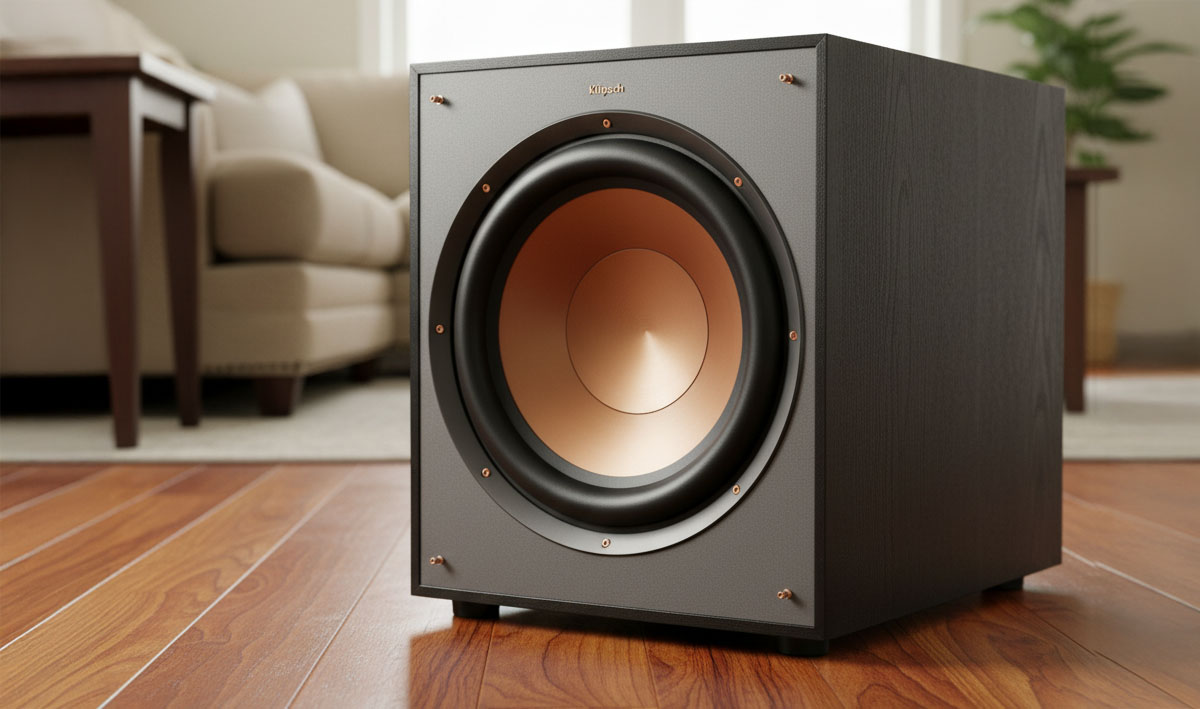Quick Take
Klipsch’s R-40PM is a compact powered stereo that favors immediacy and simplicity: crisp, forward detail from a horn-loaded tweeter, plug-and-play inputs for TV, computer and turntable, and enough output for desks and small rooms. Owners love the painless setup, the built-in phono stage, and the “wake it up” energy at normal volumes. The trade-offs are predictable for the size: limited deep bass without a sub and treble that can feel brisk if you park the tweeters right at ear height on a reflective desk. Treat it like a smart, all-in-one first system that can evolve into 2.1, not a replacement for big passive boxes.
Pros
![]() Bluetooth, USB-B, optical, RCA line/phono with ground, 3.5 mm, sub-out
Bluetooth, USB-B, optical, RCA line/phono with ground, 3.5 mm, sub-out
![]() Lively, detailed presentation with strong vocal clarity
Lively, detailed presentation with strong vocal clarity
![]() No receiver needed; truly plug-and-play for TV, laptop and turntable
No receiver needed; truly plug-and-play for TV, laptop and turntable
![]() Compact cabinets with magnetic grilles and neat cabling
Compact cabinets with magnetic grilles and neat cabling
![]() Easy upgrade path to 2.1 via the rear subwoofer output
Easy upgrade path to 2.1 via the rear subwoofer output
Cons
![]() Deep-bass weight is limited; a sub helps for movies and EDM
Deep-bass weight is limited; a sub helps for movies and EDM
![]() Treble can sound forward in nearfield or bright rooms
Treble can sound forward in nearfield or bright rooms
![]() No HDMI ARC or Wi-Fi; remote is functional rather than luxurious
No HDMI ARC or Wi-Fi; remote is functional rather than luxurious
![]() Rear port needs some wall clearance to keep bass clean
Rear port needs some wall clearance to keep bass clean
Introduction
Powered bookshelf speakers live or die by convenience. The Klipsch Reference R-40PM aims squarely at that brief: a matched, two-speaker system with the amplification and inputs built in, so you can go from box to music in minutes. Each cabinet pairs a 1-inch aluminum LTS tweeter in a 90 x 90 Tractrix horn with a 4-inch spun-copper TCP woofer in a rear-ported MDF enclosure. The result isn’t a neutral studio monitor so much as an energetic, engaging small-room hi-fi that can run a TV, a laptop, and a turntable without adding a receiver or phono preamp.
RELATED: Fluance RT85 Turntable Review
Key Features of the Klipsch R-40PM
Versatility is the headline. The R-40PM includes Bluetooth for quick streaming, USB-B for direct computer audio, a Toslink optical input for a TV or console, and analog RCA inputs that switch between line-level and a moving-magnet phono stage with a ground screw. A mono subwoofer output on the back invites a clean upgrade to 2.1 later. In everyday use that means fewer boxes, fewer cables, and less confusion about gain matching or speaker power, because the amplification is purpose-tuned at the factory.
The horn and driver combo are voiced for presence and intelligibility. The 1-inch LTS aluminum tweeter, seated in Klipsch’s square Tractrix horn, projects high-frequency detail toward the listening area, helping vocals, cymbals, and dialogue stay clear at modest power. The 4-inch TCP woofer handles mids and bass, with cabinet depth and a rear-firing port chosen to add warmth and punch from a small footprint. Claimed frequency response is 60 Hz to 20 kHz, with dynamic bass extension to 52 Hz and a rated maximum output of 100 dB. Total system power is 70 W continuous (35 W per channel) with 240 W peak capability. Each cabinet measures 11.8 by 5.7 by 10.1 inches; the pair weighs about 18.3 pounds. In short, it’s compact, self-contained, and ready for a shelf, stand, or desk.

Sound Quality & Setup Review of the Klipsch R-40PM
Owners describe a consistent character: the Klipsch R-40PM sounds lively and forward through the presence region, with crisp transients that make voices pop and percussion feel taut. That immediacy is why these speakers excel in nearfield listening and as a smarter TV stereo. At moderate levels they stay articulate and composed; push into the very top of the volume range and you’ll notice the usual small-box limits where bass lines lose shape before the treble does.
The horn is more than a party trick. Its controlled directivity narrows the high-frequency spread compared with a bare dome, which pays off in two ways at home: clarity holds up when you sit closer than a meter, and side-wall and desk reflections don’t smear the top end as much. The flip side is that toe-in matters. If you find the treble a touch assertive at a desk, rotate the speakers slightly outward so the tweeter axes cross just behind your head. You keep intelligibility while easing bite.
Bass is exactly what you’d expect from a compact 4-inch woofer. In a small bedroom or office, you’ll hear real punch and tuneful bass guitars at sensible volumes, especially if the speakers have a few inches of air behind them. In a medium living room, physics taps the ceiling; the lowest octave simply isn’t there. That’s not a flaw of tuning so much as cone area and cabinet volume. The saving grace is the clean sub-out. Add a modest sub around an 80–90 Hz crossover, set phase where bass lines sound strongest at your seat, and trim level until switching the sub on and off changes depth rather than loudness. Done right, the sub disappears and the mains keep their clarity.
Compared with similarly priced powered competitors, the Klipsch sits in the middle of a triangle: presence, fullness, and convenience. Speakers with larger 5–6.5 inch woofers tend to sound fuller from the mains alone but often give up some of the front-row vocal projection you get from the horn. More neutral powered sets that include HDMI ARC sound smoother with bright streams and give you one-remote TV control, yet they won’t project dialogue as boldly on a desk. The R-40PM chooses presence and versatility over maximum bass or HDMI niceties, and that choice is deliberate.
Performance Suggestions that Help
Dynamic headroom on compact powered speakers is finite. Treat the top 10–15 percent of the Klipsch R-40PM’s volume range as emergency power, not daily listening. If the midbass tightens then flattens while the upper mids stay shouty, lower the speaker’s own volume a notch or two and raise your source volume instead. That gain structure keeps transient snap intact and avoids the “small box threshold” where authority drops faster than decibels rise.
Nearfield physics also matter. A desk puts a reflective plane between you and the tweeters, which exaggerates the first bounce. If consonants sound “spitty,” look along the desktop until you can see the tweeter’s reflection. That line is your trouble spot. A slight downward tilt or a small absorber pad there tightens the center image more effectively than EQ at this size.
Input choice isn’t trivial either. USB from a laptop is the most consistent path for everyday clarity and channel balance at a desk. Optical from a TV minimizes lip-sync weirdness with simple PCM stereo, although you give up single-remote volume because there’s no HDMI ARC. Bluetooth is ideal for casual listening and guests. If high-frequency hash creeps in at louder levels over Bluetooth, a quick switch to USB or optical cleans up cymbals and leading edges.
Who Is It For?
This system is for listeners who value simplicity and presence over raw bass output: apartments, offices, dorms, small living rooms, and anyone who wants real stereo separation from two small boxes without adding a receiver. If you’ll never add a subwoofer and you crave chest-thump at movie night, larger powered cabinets or a passive system with bigger woofers will scratch that itch. If HDMI ARC is non-negotiable for TV control, a powered pair with ARC is the better fit. If vinyl is on your day-one checklist, the R-40PM’s built-in moving-magnet phono stage keeps the chain clean and short.
Tips for New Owners
Start with sensible geometry rather than guessing. Keep the speakers roughly 24–30 inches apart on a desk and sit 28–36 inches away, with tweeters at ear height. Begin about eight inches from the rear wall and toe in until the cabinet sidewalls just disappear from your view; then fine-tune wall distance in one-inch steps to trade bass fullness for tightness. In a bright room, a slight downward tilt or soft pads under the front edges take the sting out of the horn without losing articulation. If you plan to add a sub, set the sub’s level first so toggling it on and off changes depth more than overall loudness, then sweep the crossover between 70 and 100 Hz until kick drums hit once instead of twice.
Alternatives to Consider
ELAC Debut ConneX DCB41.
The obvious convenience upgrade is HDMI ARC. You keep optical, USB, Bluetooth, analog, and a sub-out, but you gain single-remote TV volume and input switching. Many owners describe a more neutral, less forward balance than the Klipsch. If your primary use is TV plus streaming and you care about one-remote simplicity, this is the straight shot. You give up the Klipsch horn’s “front row” presence and the specific Klipsch voicing in exchange for HDMI convenience.
Audioengine A5+ Wireless.
Stepping up to larger 5-inch woofers and higher continuous power buys more midbass density and easier room fill. You don’t get optical, USB-B, or a built-in phono stage; it’s a warmer, music-first take that prefers analog and Bluetooth. Choose it if you want fuller mains without a sub and you’re not trying to run your TV or turntable from digital inputs on the speakers.
Edifier S1000MKII.
Bigger boxes, more output, and optical plus coaxial digital with aptX HD for nicer Bluetooth. There’s no built-in phono stage, but owners often call out stronger bass reach and an overall “bigger” sound. If vinyl isn’t in your plan and you want more low-end authority from one purchase, this is the pragmatic option.
Final Thoughts
The Klipsch Reference R-40PM doesn’t pretend to be something it isn’t. It’s a compact, all-in-one stereo that trades deep-bass slam and HDMI tricks for genuine two-channel imaging, a forward, intelligible mid/treble, and connections that cover the basics without extra boxes. In small and medium-small spaces, it makes everyday listening easy and engaging. Add a modest sub later and you’ve built a tidy 2.1 that embarrasses most soundbars on stereo separation alone. If you want simple setup, crisp presence, and an honest path to grow into deeper bass, this pair makes a lot of sense.
FAQ
Do I need a receiver or amplifier?
No. The R-40PM is a powered system with the amplification built in. Plug your sources straight into the speakers.
What connections are available?
Bluetooth, USB-B, optical (Toslink), RCA line/phono with a ground screw, and a 3.5 mm aux, plus a mono subwoofer output.
Can I use a turntable without another box?
Yes. Switch the rear RCA input to Phono for a moving-magnet cartridge and connect the ground wire to the speaker’s ground lug.
Is there HDMI ARC for TV control?
No. Use the optical input for TV audio and the speaker’s remote or a universal remote for volume.
How big are they and how much do they weigh?
Each cabinet is approximately 11.8 × 5.7 × 10.1 inches; the pair weighs about 18.3 pounds.
How loud do they get?
Klipsch rates maximum output at about 100 dB, which is plenty for desks and most small rooms.
What should I do if they sound bright on my desk?
Reduce toe-in so the tweeter axes cross just behind your head, tilt the cabinets down slightly, or add soft pads under the front edges. Those small changes usually solve it.
Will I need a subwoofer?
Not in a small room for casual music. For movies, open floor plans, or bass-heavy genres, a compact sub at an 80–90 Hz crossover fills in the bottom octave cleanly.
Teksignal.com participates in the Amazon Services LLC Associates Program, an affiliate advertising program designed to provide a means for sites to earn advertising fees by advertising and linking to Amazon.com. The reviews on this site are hands-off consensus reviews. We analyzed owner feedback across the internet and manufacturer documentation. We summarize sentiment; we do not republish individual user posts.

